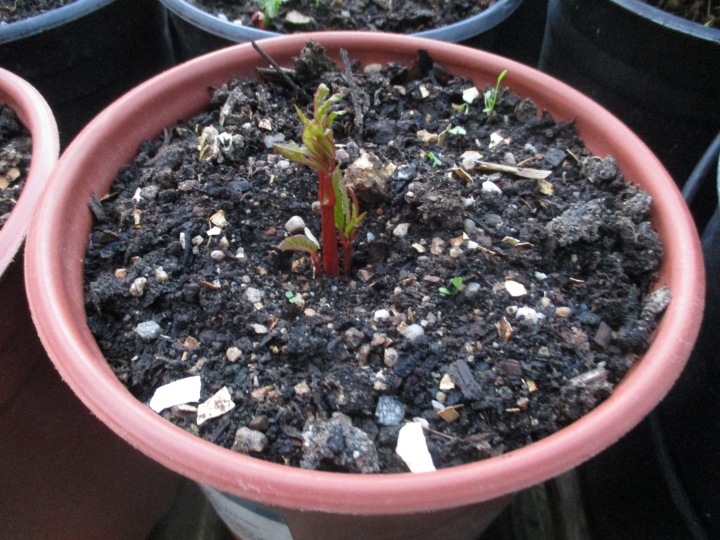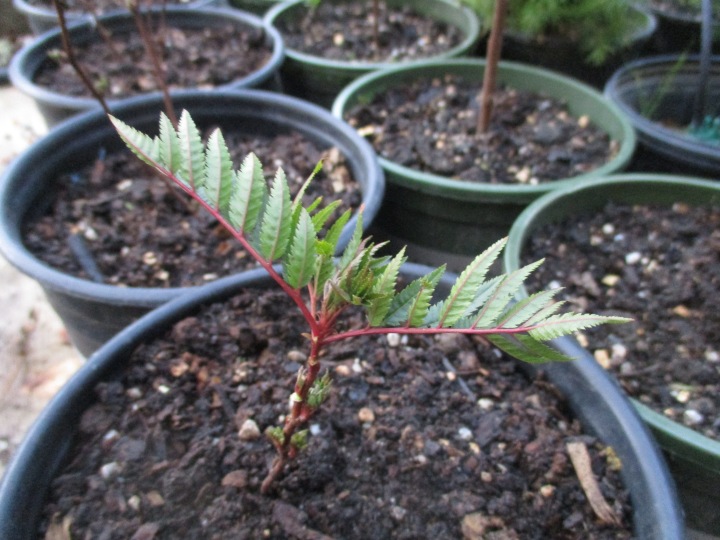There is serious doubt about the practicality of collecting seed that there is no use for. We have no time to sow any of it properly. Some gets tossed unceremoniously where it would be nice if just a bit of it grows and blooms next year. Such folly is better than the guilt of simply discarding all that seed, even if we get more of something we do not want.
1. Echinacea purpurea – coneflower – Deadheading left me with all these dead heads of seed. I have no use for all this seed; but a neighbor is happy to scatter it where some might grow.
2. Lychnis coronaria – campion – This is all the seed I got, in a small pill can. Most was left in the landscapes to disperse where already established. This bit of seed goes to new territory.
3. Lunaria annua – honesty – This is just one of several hard hat fulls. Seed already sifted down, leaving empty frass on top. I lack an article to link to, so linked to someone else’s article.
4. Aesculus californica – California buckeye – This is what is starting to grow from four big seeds that I could not bear to discard earlier. Now there will be four baby trees without a plan.
5. Pelargonium X hortorum – zonal geranium – Not all of this folly is from seed. Scrap from pruning geraniums got processed into more cuttings than we will plug. These are the last few.
6. Rhus lanceolata? – prairie sumac? – There is even more folly in canning feral seedlings of this unidentified sumac. It is about as sensible as canning the four sweetgum to the upper right.
This is the link for Six on Saturday, for anyone else who would like to participate:
https://thepropagatorblog.wordpress.com/2017/09/18/six-on-saturday-a-participant-guide/
The Lychnis coronaria has self seeded all over my garden over the last two years. I’ve got lots of seedlings to pass onto whoever wants some.
LikeLiked by 1 person
Like a few of the naturalized annuals here, ours likely migrated down from a neighborhood above. Although naturalized, it is quite docile. It grows only in a few favorite spots. I sort of hope that it will grow where it gets sown into a few other spots that it might not have discovered yet.
LikeLike
To have good intentions is not folly. Love that emerging Aesculus, not a tree I know but I’m guessing from the name, native to your territory. And more sweet gums, horrah!
LikeLiked by 1 person
I like to think that my intentions are justified if I get some other sucker to sow all these seed for me. I sow a bit of it here, but . . . I don’t want to be excessive with it. The Aesculus is of the same genus as horsechestnut. Some know it as California horsechestnut. It is not as pretty as those cultivated for garden and landscape application, but has its appeal in the wild. I happen to like the fragrance. Exposed specimens defoliate through the warmth of summer, which is partly why they are not so great for landscapes. I might put them in my own garden. The sweetgums may go there to, if we do not find a place for them here. Because they are potentially structurally deficient, and messy with their maces, we prefer to put them where the landscapes merge into the forests. If they drop mess or limbs out there, no one will mind.
LikeLiked by 1 person
How do you do for your zonal pelargonium cuttings? Do you add hormone powder to get them started or do you just plant them directly in potting soil? I’m lazy because I overwinter them in a corner of my house and I prune them at the end of winter. But your solution is interesting to duplicate them.
LikeLiked by 1 person
Rooting hormone is unnecessary, and can actually promote rot. It is best to leave them out to dry for a day or two. The little leaves wilt, but not detrimentally so. Those in the picture are wet because I put them in water until someone else takes them away. (Otherwise, they would be out to dry for a bit too long.) I strip all but the smallest terminal leaves off, like you see in the picture. I prefer to cut them just below a node, although that is not likely necessary. (It seems to me that a long internode section of stem is more susceptible to rot than a short section below a node where roots develop.) I like to plug them just before rain. terminal cuttings are best. When I cut them back about now, I get MANY more cuttings that I want. I just can not bear to toss them all.
LikeLiked by 1 person
Thanks for all your tips. I’ll try in that way. 😀
LikeLiked by 1 person
The most primitive of zonal geraniums that have not been extensively bred are the easiest to propagate from cutting. They can actually be used as small scale cover crops. Fancier types are more susceptible to rot, but are nonetheless rather simple to propagate by cutting.
LikeLiked by 1 person
Glad to know that at least one professional as well as this amateur has pill bottles with seeds that have no other home.
LikeLiked by 1 person
A neighbor uses quite a bit of medication. All those pill bottles seem to be ideal for all the seed I collect. I consider them to be disposable, so can give them to neighbors or send them away in the mail. For a few types of seed in my own garden, I prefer to use 4 ounce Mason jars.
LikeLike
I also collect all my seeds and sometimes do not have a place to sow them. Every few years, I just throw old seed in the garden with a prayer.
LikeLiked by 1 person
I am about ready to do that with some of my seed. Seed for trees go into spots where they can be dug and canned if they come up. I got a bunch of papper bark maple seed this year. If they grow, I might can them next autumn. Then, I will have a bunch of canned trees in need of good homes!
LikeLiked by 1 person
.Using your hard hat to collect seed – that’s real dedication.
LikeLiked by 1 person
It was more practical than using my boots.
LikeLike
I try to redistribute seeds and plants but often find them years later. Do Californians like Sweetgums?
LikeLiked by 1 person
Sweetgms have a bad reputation. They were planted as street trees in many municipalities in the 1960s, and in parks afterward. Now that they are maturing, their innate structural deficiency is a serious problem. Also, they drop enough of their maces to be hazardous. I like them on the perimeter of landscaped areas, where falling limbs and messy maces would not be a problem. Their color in autumn is spectacular in the foreground of dark green redwood foliage. In our mild climate, they are one of the four best species for foliar color in autumn.
LikeLiked by 1 person
Southerners hate them for the most part..
LikeLiked by 1 person
I suspect that they more commonly exhibit spontaneous limb failure in humid climates.
LikeLike
It’s the fruit 😝
LikeLiked by 1 person
Oh, the maces!
LikeLike
I recognise the symptoms!
LikeLiked by 1 person
Addiction is a terrible disease.
LikeLike